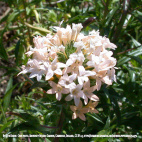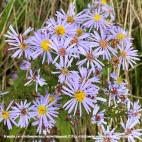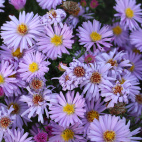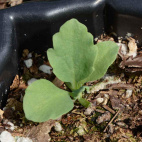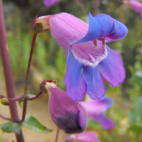Color
Availability
USDA Zone
Region
Type
Duration
Season
Germination
Soil
Sunlight
Height
Use
Narrow Your Search
Color
Availability
USDA Zone
Region
Type
Duration
Season
Germination
Soil
Sunlight
Height
Use
Wildflower Seeds - California Region
The wildflower species listed in the California Region are those that would grow well in the Central Valley as well as the coastal areas of Southern California. If you are in the mountains you might want to check out the Mountain Region, or if you are in the desert areas in the south, you'll want to look at the Dry West Region. The species of bulk wildflowers listed on this page are those that are either native here, or are annuals that grow well in this zone. There are hundreds of bulk California wildflower seeds to choose from, so please use the filters along the left side of the screen to narrow your search to match your soils, lighting, and any other attributes that you may want. If you are looking for something that is strictly native to your immediate area, you can check out the distribution map that is found on the detail pages of most of the species.
-
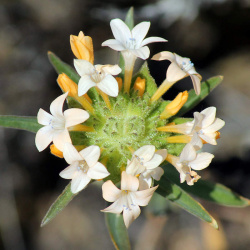 Out Of Stock
Large Flowered Phlox Seeds
Collomia grandiflora
These showy, flower clusters bloom on tall upright stalks. In the wild, the annual grows mainly in northwestern America and Canada but can be easily grown successfully in almost any garden.Quick Viewx
Out Of Stock
Large Flowered Phlox Seeds
Collomia grandiflora
These showy, flower clusters bloom on tall upright stalks. In the wild, the annual grows mainly in northwestern America and Canada but can be easily grown successfully in almost any garden.Quick ViewxLarge Flowered Phlox Seeds
Collomia grandiflora
These showy, flower clusters bloom on tall upright stalks. In the wild, the annual grows mainly in northwestern America and Canada but can be easily grown successfully in almost any garden.
$3.25 Pkt - $10.19 / Oz -
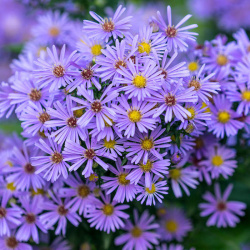 Out Of Stock
New York Aster Seeds
Aster novae-belgii
With bright yellow centers and showy purple-pink petals, these flowers are sure to make a splash. This particular variety was cultivated as early as the eighteenth century.Quick View$3.48 Pkt - $32.00 / Oz
Out Of Stock
New York Aster Seeds
Aster novae-belgii
With bright yellow centers and showy purple-pink petals, these flowers are sure to make a splash. This particular variety was cultivated as early as the eighteenth century.Quick View$3.48 Pkt - $32.00 / Oz -
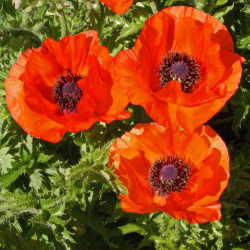 Out Of Stock
Oriental Poppy Seeds
Papaver orientale
These huge, glowing orange-red blooms are popular in flower gardens worldwide. This perennial is quite hardy and often spreads by self-sowing. It is also well-liked by the bees and butterflies.Quick View$3.48 Pkt - $15.95 / Oz
Out Of Stock
Oriental Poppy Seeds
Papaver orientale
These huge, glowing orange-red blooms are popular in flower gardens worldwide. This perennial is quite hardy and often spreads by self-sowing. It is also well-liked by the bees and butterflies.Quick View$3.48 Pkt - $15.95 / Oz -
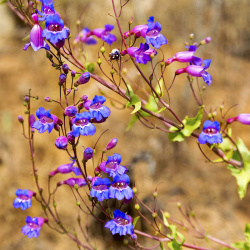 Out Of Stock
Showy Penstemon Seeds
Penstemon spectabilis
These eye-catching beauties from California take the prize with violet trumpet-shaped blossoms. The native perennial is not as winter hardy as some Penstemons and carries just a bit of that tropical flair. Hummingbirds and bees love it.Quick Viewx
Out Of Stock
Showy Penstemon Seeds
Penstemon spectabilis
These eye-catching beauties from California take the prize with violet trumpet-shaped blossoms. The native perennial is not as winter hardy as some Penstemons and carries just a bit of that tropical flair. Hummingbirds and bees love it.Quick ViewxShowy Penstemon Seeds
Penstemon spectabilis
These eye-catching beauties from California take the prize with violet trumpet-shaped blossoms. The native perennial is not as winter hardy as some Penstemons and carries just a bit of that tropical flair. Hummingbirds and bees love it.
$3.48 Pkt - $15.72 / Oz -
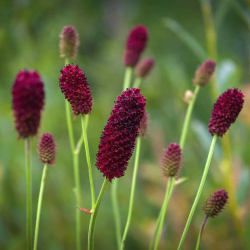 Out Of Stock
Western Burnet Seeds
Sanguisorba officinalis
Native to Europe, this prized perennial bears distinctive dark red flowers on slender, graceful stems. The cucumber-mint flavored plant is also valued as an herb and garnish.Quick Viewx
Out Of Stock
Western Burnet Seeds
Sanguisorba officinalis
Native to Europe, this prized perennial bears distinctive dark red flowers on slender, graceful stems. The cucumber-mint flavored plant is also valued as an herb and garnish.Quick ViewxWestern Burnet Seeds
Sanguisorba officinalis
Native to Europe, this prized perennial bears distinctive dark red flowers on slender, graceful stems. The cucumber-mint flavored plant is also valued as an herb and garnish.
$3.48 Pkt - $7.01 / Oz
The wildflower species listed in the California Region are those that would grow well in the Central Valley as well as the coastal areas of Southern California. If you are in the mountains you might want to check out the Mountain Region, or if you are in the desert areas in the south, you'll want to look at the Dry West Region. The species of bulk wildflowers listed on this page are those that are either native here, or are annuals that grow well in this zone. There are hundreds of bulk California wildflower seeds to choose from, so please use the filters along the left side of the screen to narrow your search to match your soils, lighting, and any other attributes that you may want. If you are looking for something that is strictly native to your immediate area, you can check out the distribution map that is found on the detail pages of most of the species.






